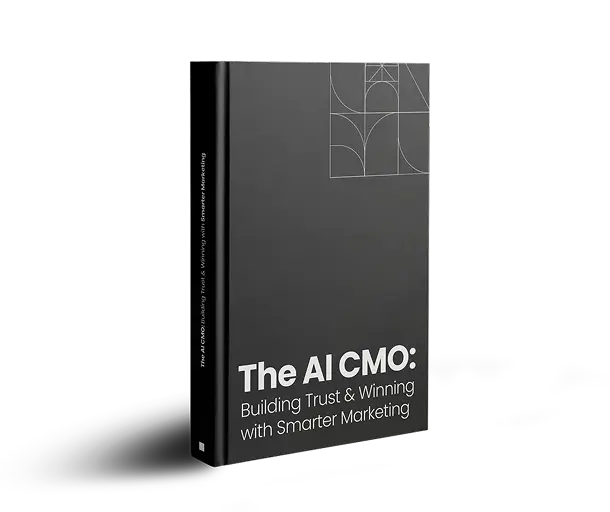
Introduction
COVID-19 is having a significant impact on people and businesses all over the world. PredictHQ tells us that there has been an 875% increase in cancellations or postponement of ‘significant and major events’ so far.
According to the CEIR (Center for Exhibition Industry Research), there are a total of 9,400 B2B exhibitions (annually) held in the U.S. alone, and these events have a total economic impact of $101 billion on the U.S. GDP. Mid-way through March about 50 major events have been canceled so far and CEIR estimates that the loss to the economy so far from these cancellations has been $1.8 billion.
Past surveys from CEIR and Forrester Research tell us that B2B marketers spend the most substantial part of their marketing budget (40.7%) on exhibitions. Almost five times more than they spend on online marketing (7.9%).
Considering that even before COVID-19 organizations were increasingly asking their staff to minimize all face-to-face meetings, the inevitable result is that marketers are increasingly turning to digital strategies as the vital source of leads.
The question is, where should marketing budgets be directed to in such times?
As workforces are furloughed, and people are generally asked to stay at home, marketers will undoubtedly have some time on their hands to review their digital marketing strategies and redefine their marketing messages.
The advantage of digital marketing is that it does not require face-to-face interaction. Better yet, digital marketing is measurable, which means that marketers can track which activities contribute the highest to quality leads, sales revenue, and ROI.
Email Marketing vs. Telemarketing
Since contacting people face-to-face is off the table, at least for now, marketers will typically turn to email marketing or telemarketing (mainly phone conversations or web conference appointments) as the primary way to generate leads.
In the now distant past, the phone was considered the primary method of business communication. Today, it’s all about email simply because it is better to ask for permission as a first touch point before making a direct call. Ignoring permission-based marketing (email marketing), and in its place using telemarketing as your first touch, you are likely to encounter these issues:
- Many prospects consider such calls to be intrusive and will be dismissive right off the bat.
- Prospects are often too busy managing phone calls that they actually want to take, which means it is difficult to stand out from the crowd.
- You are likely to hear unkind words because you have no prior relationship, or you end up on voicemail and are never heard.
On the other hand, with email marketing, the process is a lot smoother, productive, and measurable. According to the CMI’s 2020 B2B Content Marketing Report, the top metric used to measure content performance is email engagement (90%), followed by website traffic (88%) and website engagement (86%).
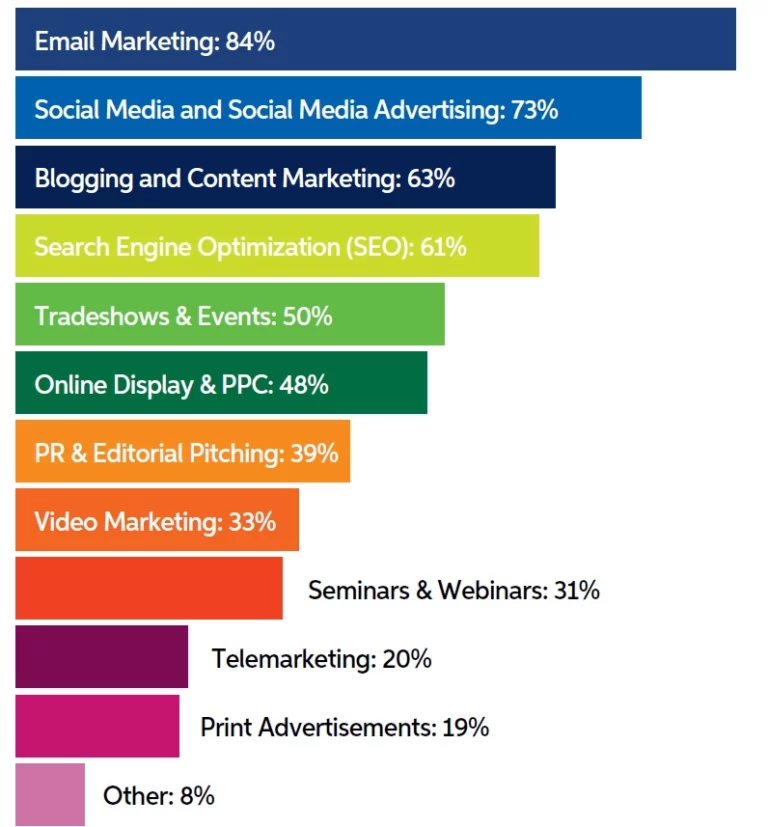
Besides the measurability of email, it is far better than telemarketing, at least as an initial touchpoint for the following reasons:
- Marketers have higher chances of engaging prospects in an initial conversation, especially if their targeting is on point. If the marketer doesn’t get an initial response, they can easily follow-up and are more likely to get a response the second time around.
- Marketers can stand out from the crowd using email in a variety of ways including, catchy subject headers and engaging personalized messaging.
- Marketers are more likely to get a neutral response from email than telemarketing.
Given that email marketing is a far more effective way to connect with prospects than telemarketing, especially during the COVID-19 lockdown, here are ten ways to keep your networking and sales on the run using email marketing.
1. Segment Your Audience
According to research conducted by Superoffice, when marketers use a segmentation strategy to send their first email to a prospect, they achieve a 38.8% click-through-rate (CTR) vs. a 3.45% CTR when they send a standard email without segmentation.
Some of the other benefits of segmenting your audience when using email marketing include improved conversion rates, reduced marketing costs, better quality leads, and more.
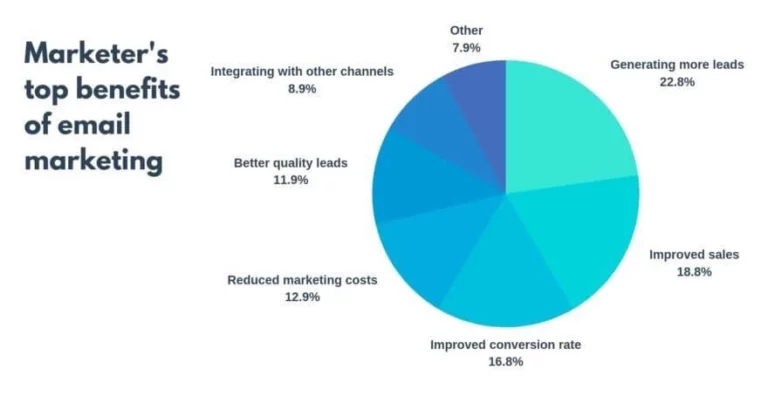
Figure 2: Benefits segmenting emails
Depending on your market, there are several segmentation strategies you can use, including, segmenting by company size, by industry, or by sales cycle.
2. Niche-Driven Strategy
Once you have segmented your market, your next best step is to decide whom to target. According to Hinge Marketing, the fastest-growing companies tend to be those that are authorities in carefully targeted niches.
A well-implemented niche-driven strategy will build you up as an authority, which means that your emails are highly likely to be well received and all your other marketing efforts will also be more effective. Building authority is productive because it makes it clear to your prospects exactly what you do and why you are different from others.
3. Send Personalized Email Messages
70 % of Millennials are upset by brands sending them irrelevant blasts and prefer personalized emails. For the marketer, this means that there is plenty of opportunities to stand out from your competition in catching the attention of prospects through email. The simplest way to do this is by addressing your reader by name. That said, if you are going to do it at scale, then it is far better to use email marketing automation tools.
Investing in such tools is well worth it since personalization can reduce customer acquisition costs by up to 50%, increase revenues by between 5-15%, and enhance marketing spend efficiency by 10-30%.
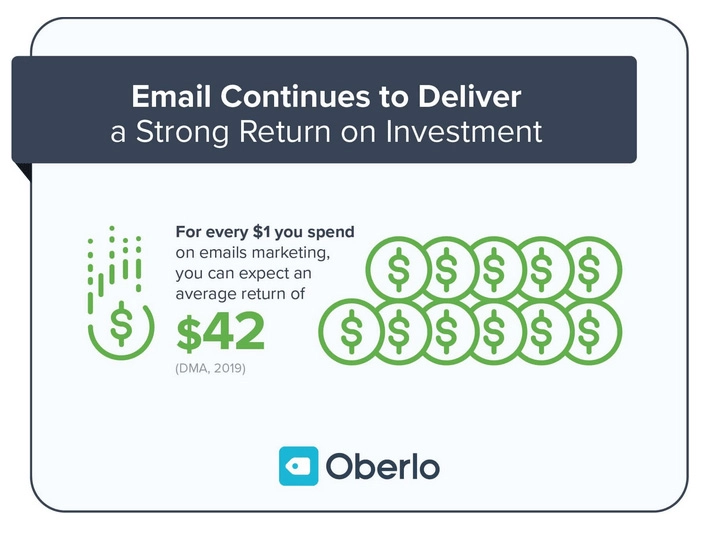
4. Automate Whenever Possible
Email marketing automation goes far beyond sending emails with the right name. Modern email automation tools allow marketers to send trigger-based emails based on the recipient’s behavior. Such emails are delivered based on a series of events and, therefore, have a high success rate because they are highly relevant and timely.
According to WebFX, triggered emails are opened 70.5% more than standard emails. Furthermore, triggered emails lead to enhanced email marketing retention, improved CTR, higher customer engagement, and higher customer satisfaction.
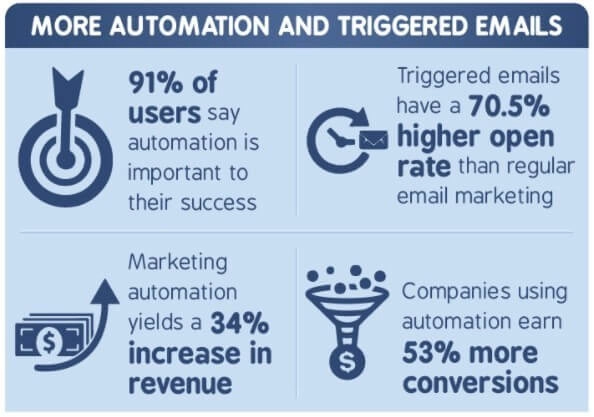
Examples of trigger emails include, ‘thank you’ emails, ‘welcome’ emails, and order confirmation emails.
5. Lead Nurturing
Triggered email campaigns should be a part of a larger lead nurturing strategy that is designed to funnel leads and prospects into finally becoming customers and advocates of your brand. Drip email campaigns are one form of lead nurturing that enable the marketer to send targeted offers to specific segments of their market over a set period. These email lead nurturing campaigns are designed to build closer engagement and educate leads through relevant content and offers.
6. Responsive Design and Mobile-Friendly Emails
According to the IBM Watson Customer engagement report for 2018, 49% of emails are opened on mobile devices. EmailMonday pegs mobile open-rate of emails at between 24% and 77% depending on your product, target audience and email type. Furthermore, 55% of mobile phone users purchase an item after receiving a promotional email. In short, smartphone users tend to pay more attention to their emails and tend to act if they are convinced.
Therefore, the least you can do is optimize your email for mobile devices or else you will be losing out on reaching a large part of your target audience. After all, 93% of smartphone users say that it’s essential for emails to be clear to read and easy to navigate.
7. Referral Marketing
The primary goals of an email marketing campaign are to engage the customer, to provide information/confirm receipt, and to compel the email recipient to take action. A properly orchestrated referral email goes a step further and manages to convince the recipient to share and positively talk about the brand. In short, it turns leads into fans, customers, and ultimately brand ambassadors.

Figure 5: Refer-A-Friend campaign by ZooShoo
8. Design Interactive Emails
Using basic newsletter formats for your emails just won’t cut it in a world where people are used to interactive and visually stimulating experiences. Adding features like collapsible menus, sliders, and GiFs is excellent, but if you want to really impress your target audience, add a video to your emails and experience an up to 300% jump in email click rates.
9. Test and Optimize
A scientific approach where you always test, measure, and optimize your marketing efforts is critical for success. Success will be achieved because you will make decisions based on data that can be used to create iterative decisions.
One of the best testing methodologies to use is A/B testing of landing pages and emails. Using A/B testing tools, you can learn which email formats convert your most users based on different email elements like design, language, CTAs, social media links, and so on.
10. Analyze and Report
Again, a scientific approach to gathering data and acting on the data is useful for understanding the results you get from your email marketing campaigns. As such, using the right metrics to collect valuable data and to measure results effectively is critical because it helps you understand what’s working and what’s not.
Some of the useful email marketing metrics you should track include, open rate, click-through rate (CTR), bounce rate, conversion rate, overall ROI, revenue per email, email sharing rate, mobile open rate, and domain open rate.
Final Thought
In order to remain competitive, companies must endlessly reassess their B2B marketing strategies and find ways to improve. As digital marketing continues to evolve, businesses must collect and leverage data to understand how the market is changing and how they can best improve their marketing strategies.
Since email marketing continues to deliver remarkable results, marketers should pay it attention. That said, sending the same standard email to large unsegmented groups will not give the promised results. Updating your email strategy using some of the ideas mentioned above should be your first step when reevaluating your marketing strategy during the COVID-19 lockdown. Doing so will lead you towards email marketing success, where customers are increasingly responsive, campaign performance improved, and where business continues to grow.
Our blog
Latest blog posts
Tool and strategies modern teams need to help their companies grow.

Video has emerged as one of the most effective tools to cut through the noise and con...

The way B2B buyers research, engage, and decide has changed and so must the way marke...

Channel marketing helps B2B companies grow by partnering with third-party sellers. It...






